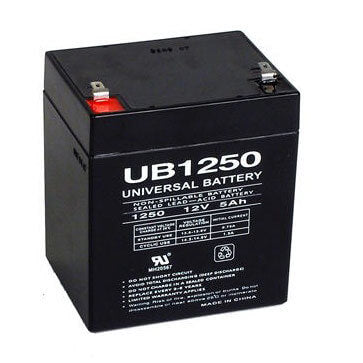Emergency Light Circuit Boards
If the 'heart' of an Emergency Light is the battery then the circuit board must be its 'brain'. Each Emergency Light is equipped with a small circuit board that controls its various functions, which include:
- Keeping the battery fully charged.
- Transforms the building's AC power feed into DC electricity to power the fixture lamps and charge the battery.
- Switches the unit to emergency battery power when the building loses power.

The processes involved are not very sophisticated but it is imperative they work exactly right at all times. Should any component fail, the Emergency Light will be worthless. Regular scheduled maintenance will insure the circuit boards continue to operate as designed.
Insuring Battery Charge
All batteries self-discharge over time and the circuit board counters this through sporadic trickle charging. This slow charge keeps your battery running at full capacity as well as extend its shelf life.
Browse Our Replacement Emergency Light Battery Category.
Converting AC Power to DC Power
There are no AC batteries in existence, but there are bulbs available in AC (alternating current) and DC (direct current) options. The AC from your building gets converted to DC via a half-wave bridge rectifier on the circuit board, which is the least complicated way to transform AC to DC. This lets the positive wave form pass through the unit's DC circuits without a hitch.
Switching From AC to Battery Power
In the event of a building-wide power failure, Emergency Light circuitry will automatically switch over to battery backup power. It will take a few seconds to perform this switch-over and is regulated by an electrolytic capacitor coupled with a resistor that acts as a timer. This delay counteracts any flickering due to sudden voltage level dips caused by sudden activation of appliances on the same circuit, like an air conditioner. If the Emergency Light switches over immediately, the capacitor is likely compromised.
Browse Our Most Popular Emergency Lights with Battery Backup
Replacement of Emergency Light Circuit Boards
The circuit board within an Emergency Light should last between 10 - 15 years. The electrolyte capacitor is often the first component to fail, since the electrolyte inside will gradually dry out, and heat can exacerbate the process. Should an Emergency Light fail during maintenance or an actual emergency, test the bulbs and battery with a multi-meter. If they prove satisfactory, the circuit board should be changed out.
Replacing circuit boards is easy and does not require a static-free environments like computer circuitry. Just open the case, remove the attached wires and unscrew the circuit board.
There is a unique circuit board for every lamp type, battery model and voltage. It's important to swap-out spent circuit boards with an identical board from the same manufacturer or at least a substitute recognized by that company.
Our team of highly-trained circuit experts would love to help guide you through the process. Call 800-480-0707 today to order your Emergency Light or request an invoice. You may also email the production staff. We'd love to hear from you!
